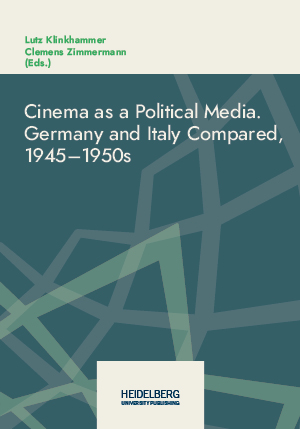Zitationsvorschlag
Identifier (Buch)
Veröffentlicht
Building Figurations of Contingent and Substantial Communities. Differences between Italian and German Post-war Cinema Aesthetics
In this chapter I will compare the film “Somewhere in Berlin” by Gerhard Lamprecht, which was and is still highly praised in Germany, with Roberto Rossellini’s “Germania anno zero” from 1947 and analyze the superficially similar and yet under the surface very different forms of staging community in both films. “Germania anno zero” was initially sharply criticized in Germany, but is now generally regarded as one of the paradigmatic films of Italian neo-realism. My aim is to outline these forms of staging community in a close reading of the films thereby highlighting the differences between German and Italian cinema of the time as differences in the audiovisual understanding of history and historicity. I feel it necessary to clarify the specific approach I take as a film scholar with regards to questions of history and historicity as audiovisual forms of experience. Having outlined my approach, I will analyze the specific mode of address unique to the medium of film using the example of the staging of community in the two films mentioned. My goal is an approach to understanding history, which focuses on the affective mode of address characteristic of cinema; a mode of address which makes the tension between individual historical experience and the historicity of these forms of experience themselves tangible to cinema audiences.







